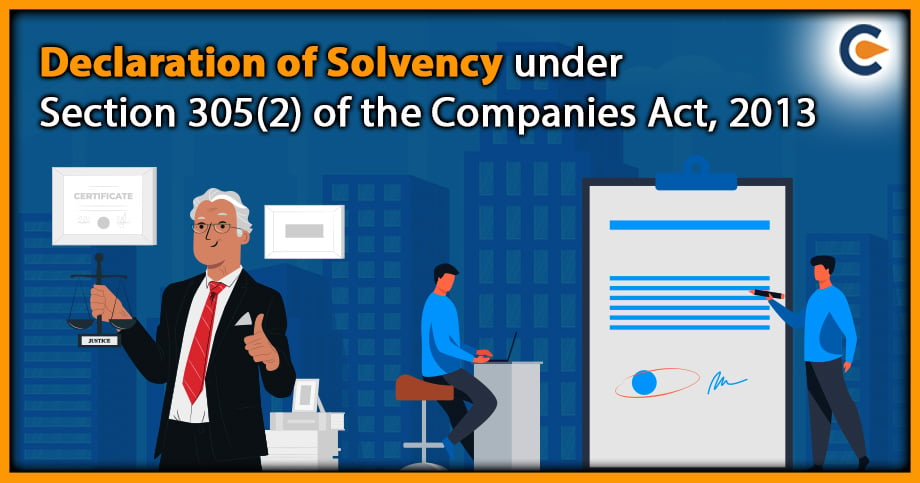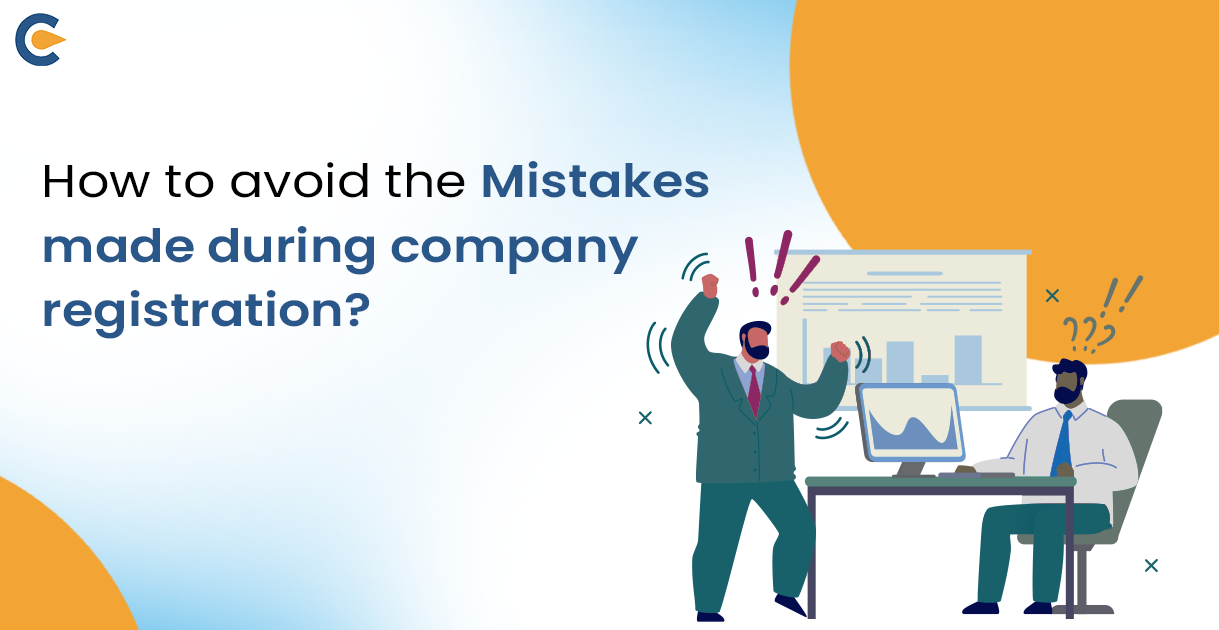A firm’s directors are required to provide a Declaration of Solvency (“DoS”) when the company plans to liquidate itself voluntarily. A directors’ obligation statement is a legal affirmation that the company is solvent and will be able to pay all of its debts in full within the time period specified in the DoS. In the event of a voluntary liquidation (or voluntarily winding up) of a company, directors are required by law to provide a DoS. The Companies Act of 1956 and the Companies Act of 2013 both govern voluntary liquidation of corporations, which was formerly known as voluntary winding up of corporations. According to law, the Companies Act of 1956 made a distinction between members’ and creditors’ voluntary winding up based on the DoS requirement, which was made necessary in cases of members’ voluntary winding up. The Companies Act, 2013 (which replaced the Companies (2nd Amendment) Act, 2002), which had provisions that were never enforced, erased the distinction. The Insolvency & Bankruptcy Code, 2016[1] (“the Code”) totally abolishes this distinction, making all voluntary liquidations subject to shareholder resolution, creditor approval, and a Declaration of Solvency.
Declaration of Solvency – Voluntary Liquidation
Declaration of Solvency stands for confirmation of solvency, and the assertion made in the affidavit counts as confirmation. When a corporation hasn’t made any defaults, it is termed to be solvent. Since the company is a legal entity, the directors must certify its solvency by stating that it has no debts and can pay all of its bills in full within the time period specified in the declaration. Declaration of Solvency is one of the requirements to start a voluntary liquidation, according to Section 59 (3) (a) of the IBBI (Voluntary Liquidation Process) Regulations, 2017, when read with Regulation 3.
It stipulates that a Declaration of Solvency must be provided by a majority of directors, coupled with an affidavit declaring that –
- They have conducted a thorough investigation into the company’s operations.
- Based on their investigation, they have determined that:
- There are no debts.
- The proceeds from the company’s liquidation will be used to settle its debts.
The Companies Act of 1956 and the Companies Act of 2013 both have requirements that are comparable to those outlined in the Code. The Code, however, has revoked the same.
Comparison among Different Enactments for Voluntary Solvency
The following comparison of the requirement under several enactments has been developed for a better understanding of the need:
| Section 59 of the Code read with Regulation 3 of the IBBI (Voluntary Liquidation Process) Regulations, 2017 | Section 305 of the Companies Act, 2013 | Section 488 of the Companies Act, 1956 |
| A majority of directors must sign a declaration, which must be supported by an affidavit, saying that:- They have conducted a thorough investigation of the company’s operations. They have decided that either the company is debt-free or that it will be able to pay off all of its debts with the money from the assets that will be auctioned during the voluntary liquidation. | The declaration must be made by the majority of the directors or the board of directors and must be supported by an affidavit. It must state that: They have thoroughly investigated the company’s affairs. They believe the company has no debt or will be able to pay off all of its debts with the money from the sale of its assets in the voluntary winding up. | The declaration must be made by directors/majority of directors and must be supported by an affidavit, stating that They have conducted a thorough investigation into the company’s activities. After doing so, they have come to the conclusion that the company has no debts or that it will be able to pay off all of its debts within the time frame which may be stated in the declaration of not more than three years following the start of the winding up. |
| The declaration further notes that there are no fraudulent intentions behind the company’s liquidation. | Additionally, the declaration states that the corporation is not being wound up in order to mislead any person or persons. | The declaration must clarify that there are no fraudulent intentions behind the company’s liquidation. |
| The following documents must be included with the declaration: Audited financial accounts and a record of the company’s business operations for the past two years, or for the time since its establishment, whichever is later. The report provided by a registered valuer detailing, if any, the company’s asset appraisal. | The following documents must be submitted with the declaration: A copy of the company’s auditor’s report on its profit and loss account for the time period covering the date the most recent such account was prepared through the latest date practicable just prior to the declaration’s filing. The company’s balance sheet prepared as of that date, which would also include a description of the company’s assets and liabilities at that time. A registered valuer’s report containing the company’s asset valuation. The time interval between the declaration and the adoption of a resolution for winding up should not be longer than five weeks. | The following documents must be submitted with the declaration: A copy of the company’s auditor’s report on its profit and loss account for the time period spanning from the date the most recent such account was prepared to the latest date practicable just prior to the declaration’s filing. The company’s balance sheet, which was prepared as of the most recent date and includes a statement of the company’s assets and liabilities at that time. |
| The interval between the declaration and the adoption of a resolution for winding up should not be longer than four weeks. | The time interval between the declaration and the adoption of a resolution for winding up should not be longer than five weeks. | The time interval between the declaration and the adoption of a resolution for winding up should not be longer than five weeks. |
Making a Declaration of Solvency: Important considerations
The directors of the company must form their view after conducting a thorough investigation of the firm’s affairs in order for it to be taken into consideration when making a Declaration of Solvency. In reality, directors must make sure there is no reason to believe the company won’t be able to pay off its debts and that the assets of the firm are worth at least as much as the liabilities it owes. This must be maintained throughout the full voluntary liquidation process.
There is no explicit instruction in the Code (as there wasn’t under the previous business laws) on the specific elements that must be taken into account when forming an opinion like the one above. One can, however, reference international law.
The provisions relating to solvency statement under Section 7A of the Companies (Amendment) Act, 2005, passed by the Singaporean parliament, can be used to understand the considerations that directors must take into account while preparing a Declaration of Solvency. According to Section 7A (3) of the Act, “the directors of the company must take into account all liabilities of the company (including contingent liabilities)” while determining the company’s ability to pay debts.
Who May Submit A Request For Voluntary Liquidation?
A corporate person that intends to liquidate itself voluntarily may do so under the terms of Section 59 of Chapter V of the Insolvency and Bankruptcy Code. This corporate person may be a Company, a Limited Liability Partnership, or any other person incorporated with limited liability under any law.
Conditions Necessary for Voluntary Liquidation
According to Section 59(3), the Insolvency and Bankruptcy Board must set forth certain requirements or important prerequisites for the Voluntary Liquidation of Corporate Persons.
According to the Insolvency and Bankruptcy Code, only corporate people with a full ability to repay debt and who have not made any defaults and have not fallen behind on payments are allowed to apply for voluntary liquidation.
Notification to the Public
Within five days of being appointed, the liquidator must issue a public notification urging interested parties to file claims no later than 30 days after the start of the liquidation.
It should be published on the corporate website as well as in English and regional publications with large readerships in the area where the registered office is located. Within 30 days of the latest date claims were received, the liquidator must verify the claims and decide whether to accept or reject them.
Based on evidence of claims received with: – The liquidator shall create a list of stakeholders within 45 days of the final date for receipt of claims.
- The amounts of the admitted claims, if any.
- The degree to which, if any, the debts or obligations are secured versus unsecured.
- Information about the parties involved.
- The evidence is accepted, partially rejected, or completely dismissed.
Declaration of Solvency under Section 305(2): Explained
The Declaration of Solvency is a declaration made by the directors of a company in which they confirm that the company has the ability to pay its debts in full within a specified period not exceeding 12 months from the date of the declaration. This declaration is made when a company is planning to wind up its affairs voluntarily under Section 305(2) of the Companies Act, 2013.
In this declaration, the directors must state that they have made a full inquiry into the affairs of the company and that, in their opinion, the company will be able to pay its debts in full within the specified period. The directors must also state that the company is not carrying on business with the intention of defrauding its creditors, and that the company has not committed any act of insolvency within the preceding year.
The Declaration of Solvency must be signed by all the directors of the company and must be filed with the Registrar of Companies within 5 weeks immediately preceding the date of the passing of the resolution for winding up of the company. Once the Declaration of Solvency has been filed with the Registrar of Companies, the company may proceed with the process of voluntary winding up.
It is important to note that making a false Declaration of Solvency is a criminal offence and can result in penalties or imprisonment. Therefore, the directors must ensure that they have conducted a thorough investigation into the company’s affairs before making the declaration.
Conclusion
The Declaration of Solvency is a declaration made by the directors of a company stating that the company can pay its debts in full within a specified period not exceeding 12 months from the date of the declaration. This declaration is made when a company is planning to wind up its affairs voluntarily under Section 305(2) of the Companies Act, 2013. The directors must ensure that they have conducted a thorough investigation into the company’s affairs before making the declaration, and once it has been filed with the Registrar of Companies, the company may proceed with the process of voluntary winding up. Making a false Declaration of Solvency is a criminal offence and can result in penalties or imprisonment. If you need further clarification or have any other questions regarding the Declaration of Solvency, feel free to ask our experts!
Read Our Article: Types Of Companies Under Companies Act, 2013











